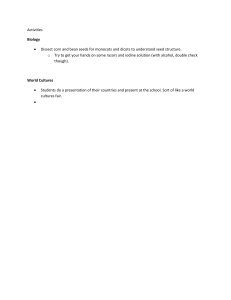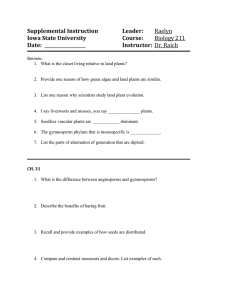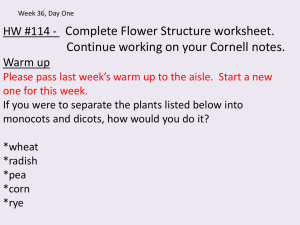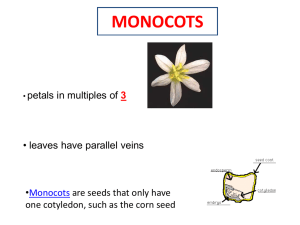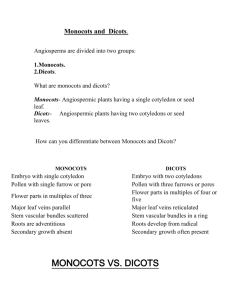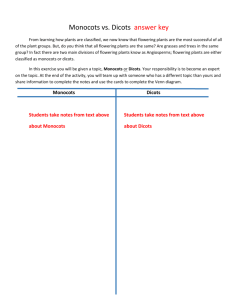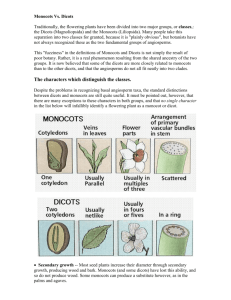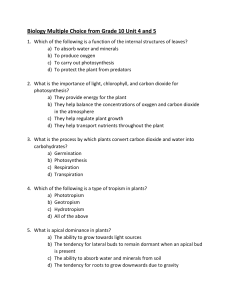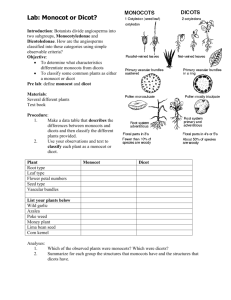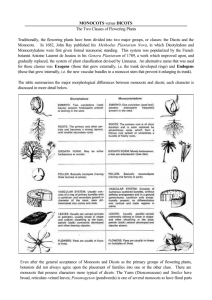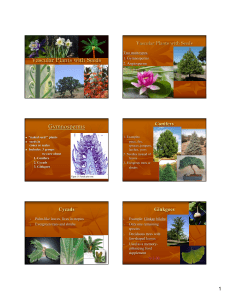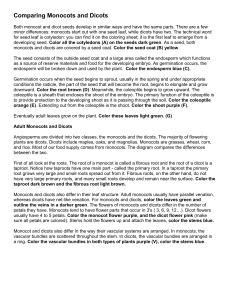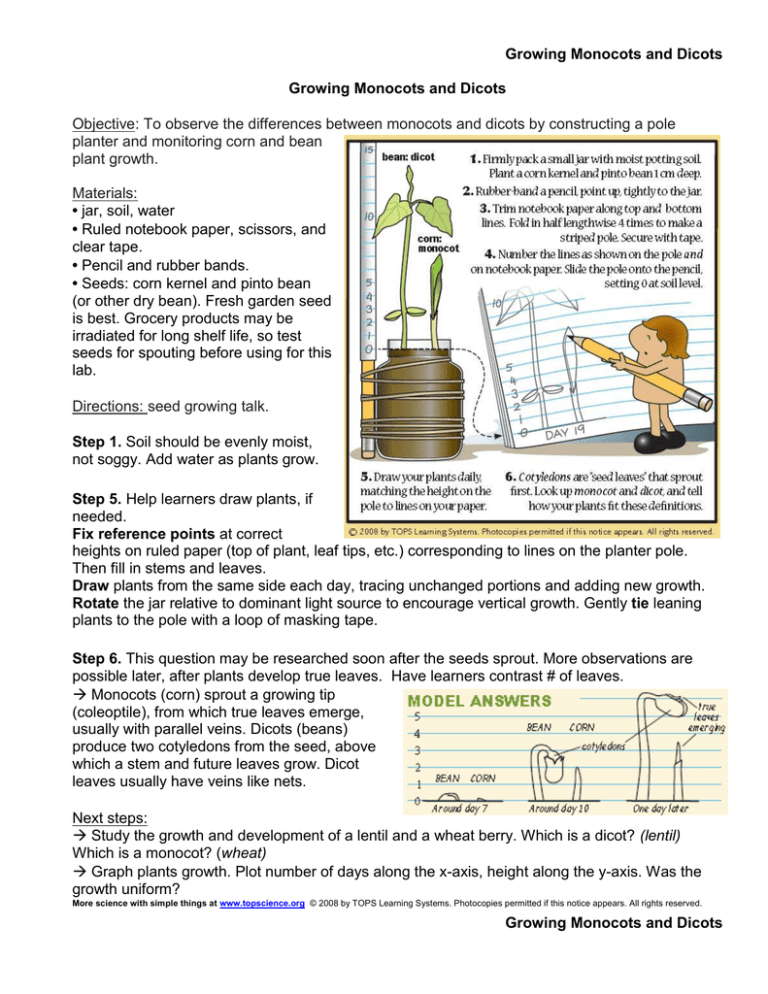
Growing Monocots and Dicots
Growing Monocots and Dicots
Objective: To observe the differences between monocots and dicots by constructing a pole
planter and monitoring corn and bean
plant growth.
Materials:
• jar, soil, water
• Ruled notebook paper, scissors, and
clear tape.
• Pencil and rubber bands.
• Seeds: corn kernel and pinto bean
(or other dry bean). Fresh garden seed
is best. Grocery products may be
irradiated for long shelf life, so test
seeds for spouting before using for this
lab.
Directions: seed growing talk.
Step 1. Soil should be evenly moist,
not soggy. Add water as plants grow.
Step 5. Help learners draw plants, if
needed.
Fix reference points at correct
heights on ruled paper (top of plant, leaf tips, etc.) corresponding to lines on the planter pole.
Then fill in stems and leaves.
Draw plants from the same side each day, tracing unchanged portions and adding new growth.
Rotate the jar relative to dominant light source to encourage vertical growth. Gently tie leaning
plants to the pole with a loop of masking tape.
Step 6. This question may be researched soon after the seeds sprout. More observations are
possible later, after plants develop true leaves. Have learners contrast # of leaves.
Monocots (corn) sprout a growing tip
(coleoptile), from which true leaves emerge,
usually with parallel veins. Dicots (beans)
produce two cotyledons from the seed, above
which a stem and future leaves grow. Dicot
leaves usually have veins like nets.
Next steps:
Study the growth and development of a lentil and a wheat berry. Which is a dicot? (lentil)
Which is a monocot? (wheat)
Graph plants growth. Plot number of days along the x-axis, height along the y-axis. Was the
growth uniform?
More science with simple things at www.topscience.org © 2008 by TOPS Learning Systems. Photocopies permitted if this notice appears. All rights reserved.
Growing Monocots and Dicots

